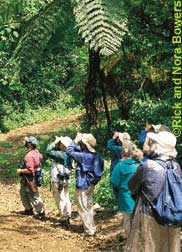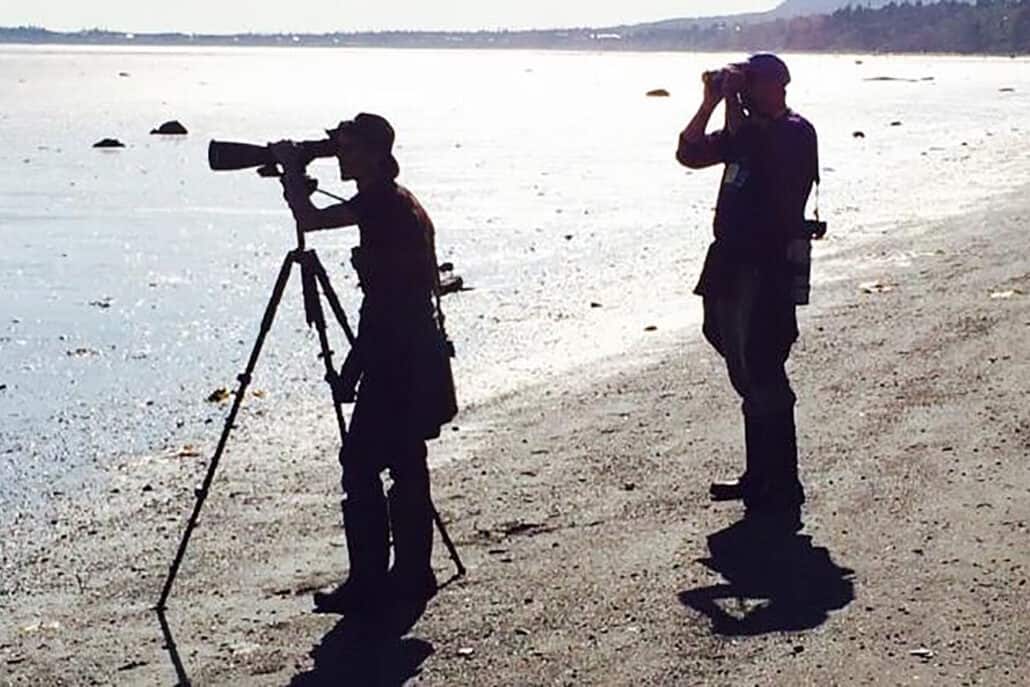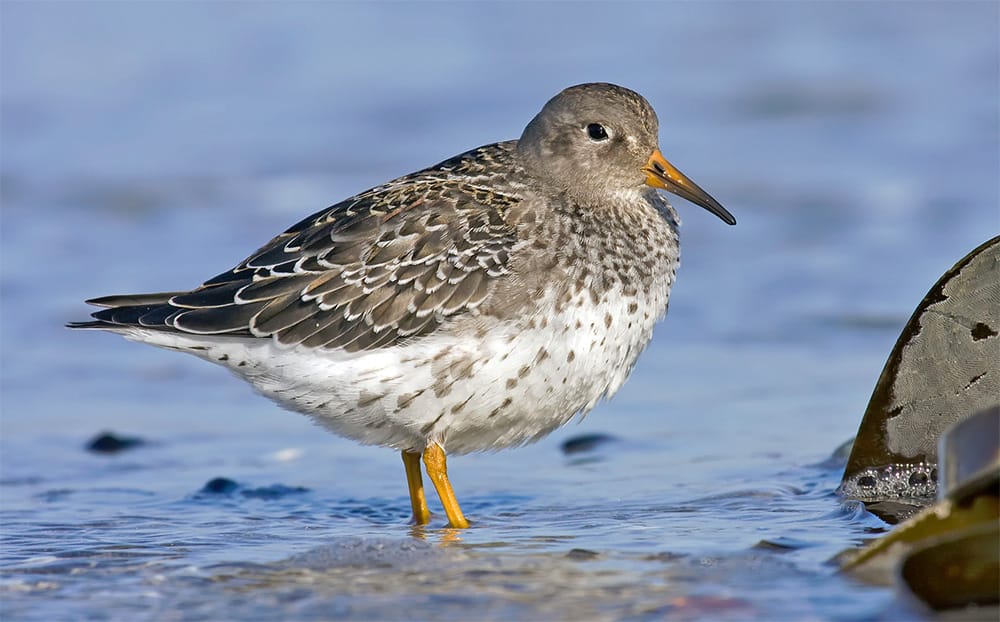
Whoever coined the phrase “anticipation is half the fun” must have been planning a birding trip. With a map of your destination spread out before you – flanked by field guides, checklists, and wildlife refuge brochures – it is impossible not feel the thrill of the chase. Never mind that a winter storm may be howling around the eaves, you have already mentally leaped ahead to your next birding adventure.
Perhaps it will be a springtime trip to a wildlife refuge, a journey to a rainforest on the other side of the world, a visit to a North American hotspot, or a pilgrimage to catch a seasonal migration. Whatever your destination, anticipation runs high as you pore through reference material. The green patches on your map translate into parks and sanctuaries, the squiggly lines on the refuge brochures become trails through promising habitats, and, as you scan the checklists, certain species jump out at you, screaming, “Lifer! Lifer!”
If you identify with this description, and if the mere thought of visiting a new bird-watching area makes your pulse race, you already know that the pleasure of a birding trip begins well before the journey itself, and the more planning you do, the more successful your trip will be.
I’ve watched birds for more than 20 years and have had the good fortune to visit many parts of the world in search of them. Over time I have developed a “leave no stone unturned” system for planning my trips, an approach that fully prepares me, leaves little to chance, and ensures optimum success.
There is certainly nothing wrong with going to a new area without preparation and study, but I find this casual approach wanting in two important respects: You deny yourself the pleasure that comes through planning and research, and you run the risk of missing key areas or species, an important point to consider if one of your goals is to add birds to your life list.
How well I remember the sting of disappointment I felt many years ago when I discovered, upon reaching home after a birding trip along the Oregon coast, that I had been within a few miles of a rarity and not known it. Had I done my homework, a spotted redshank could have been mine. That incident made a believer out of me, and I swore I would never leave home unprepared again.
WHERE TO BEGIN
Once I have chosen my birding location – in North America, for example – I begin my research map of that state or region. With the map laid out flat, I consult my copy of Guide to the National Wildlife Refuges by Laura and William Riley, and highlight the refuges on the map.
Next I use my copy of The Complete Guide to America’s National Parks from the National Park Foundation, to likewise mark – with a different color – the location of the parks. In a third color I highlight recommended birding areas in A Guide to Bird Finding West [or East] of the Mississippi, excellent companion guides by Olin S. Pettingill. Although these are available at the library, they are essential reference books for the serious birder’s home collection.
My map now holds the big picture, or outline, for my trip, because the major birding areas are clearly marked and color coded. Depending on how the birding locations are clustered, I can now plan my route to visit as many areas as possible, given the time constraints of my trip. Or I can prioritize the list and trim my itinerary to the top three or four must-see spots.
REGIONAL GUIDES
The next step is to gather any pertinent regional guides I have on hand. If I am headed for the Rio Grande Valley, for example, I consult my copy of A Birder’s Guide to the Rio Grande Valley of Texas, by James A. Lane.
Another excellent book that focuses on particular areas is Birdfinder: A Birder’s Guide to Planning North American Trips, by Jerry A. Cooper (American Birding Association).
These books contain maps, bird lists, bird-finding directions, and seasonal tips. The Cooper book also includes advice on lodging, transportation, and costs. By consulting regional guides, I begin to fine-tune my travel plans, thus saving both time and money when I arrive at my destination.
REFERENCE FILES
Many years ago I bought a used filing cabinet at a yard sale and began my own collection of birding and travel information.
For each state, as well as for each foreign country in which I have an interest, I have a manila file folder. Whenever I come across useful information on potential birding trips – magazine or newspaper articles, brochures, maps, refuge checklists, and so on – I clip it out or photocopy it and file it in the appropriate folder. When planning my next jaunt, I simply pull the file for that area and sort through its contents for supplementary tips and ideas.
Many of my files already contain brochures and checklists from wildlife refuges around the country. If I do not have such data, however, I consult my Riley book on refuges and send away for information. To ensure a response, I always enclose an SASE.
My leave-no-stone-unturned approach includes a trip to the library, where I browse the Internet looking for general information, reading accounts of other people’s excursions, and visiting chat rooms to talk with birders who may have useful tips regarding recent sightings in my area of interest. If you have Internet access at home, all the better.
From the library I can also check out travel and natural history videos, recordings of bird songs, and related books.
TARGET BIRDS
This is one of my favorite parts of planning a trip. By consulting my map, field guide, and other references, I can generate a list of the species I need to add to my lifelist. These become my so-called target birds, the species I concentrate on finding while on my trip.
When I visited Texas one spring, for example, I had four target birds: Colima warbler, black-capped vireo, Montezuma quail, and common black-hawk. My research indicated that I needed to focus my efforts in the areas of Big Bend National Park and Fort Davis. By doing so, I added all four species to my life list.
Once I identify my target birds, I fill out a 3 x 5 index card for each one. I print the bird’s name at the top of the card, then below that I note such things as location – a particular refuge, for example, the bird’s preferred type of habitat, and any key field marks or distinguishing behavior.
My card system works in several ways. The process of filling out the cards helps me to identify, become familiar with, and thus memorize the characteristics of the species in which I have a particular interest. Both in transit – usually on an airplane – and when I arrive, I can easily flip through the cards to refresh my memory. I can also handily sort them into categories such as habitat, and once I have ticked a particular species, I retire that card.
On a recent return to Trinidad and Tobago, my card system proved to be invaluable. My first trip to that part of the world yielded 137 species, most of them lifers. When planning my second visit, I went through my field guide for Trinidad and made index cards for the lifers I thought I had a good chance of seeing my second time around.
Once in Trinidad I was able to sort my cards by habitat – rainforest, savannah, swamp, coast – and save a lot of hit-or-miss birding. As I totted up my new species each evening, it was gratifying to see my card pile dwindle. By the end of the trip, I had added 33 birds to my world list.
Another way to home in on target birds is to contact the National Audubon Society chapter nearest your destination and ask for help in locating particular species. You may also sign on for a field trip in that area or, if your timing is right, take part in that chapter’s Christmas Bird Count.
It also pays to call the Rare Bird Alert number for that locale. I like to call just before I leave home, to get a heads-up regarding rarities and other sightings of interest. During the trip I call the number a couple more times, just to make sure I don’t repeat my spotted redshank mistake.
FIELD GUIDE
My final preparation involves a thorough study of my field guide and my 3 x 5 cards. In my field guide – particularly if it covers an area of the world that is new to me – I highlight key points regarding field marks, distribution, and habitat. I study the pictures and try to commit to memory the images of the birds I hope to see. I affix index tabs to the color plates, so that in the field I can quickly turn to a certain section and not waste any time fumbling through the index. While in transit I continue my study so I am ready to begin identifying and enjoying birds the moment my plane lands.
A FINAL POINT
Never leave home without a spare set of binoculars! If you lose or break your only pair, your trip will become an exercise in frustration. I learned this the hard way when my husband, Karl, and I were robbed in Costa Rica. The thieves did not get my bird book or my field notes, thank goodness, but they did get our binoculars.
As we made our way to the American embassy in San Jose – life birds flashing by at every turn of the road, and I not able to get a close look at them – I bitterly joked with Karl, regarding thieves, “You may have my passport, my money, and my plane ticket, but don’t take my binoculars!” Since then, I have always tucked a spare set into my luggage.
Lest you think that I am just a lister, and that all of this pretrip planning indicates a grim and humorless do-or-die attitude toward birding, let me set the record straight. I love birds, whether they are lifers or old friends, and I am constantly learning things about them. Keeping lists keeps me sharp and helps me focus on the various avian life forms that grace every corner of our amazing planet. By searching out new species I am increasing my appreciation of the natural world, and I am celebrating the miracle of biodiversity.
Having said that, when planning your next birding trip, make the most of it: Don’t just go – go prepared. And remember, anticipation is half the fun.





hello, I’m a subscriber to the magazine for several years. The articles from previous editions of state hotspots has been very helpful in my travels. I realized yesterday I didn’t have any info for Arizona. Are they still located somewhere on the web where I can access them? Ray Spahn
Hi Raymond,
Please use the search at the bottom of the page. You should be able to find most of the articles that were on the old site. I hope that helps!
Shanna